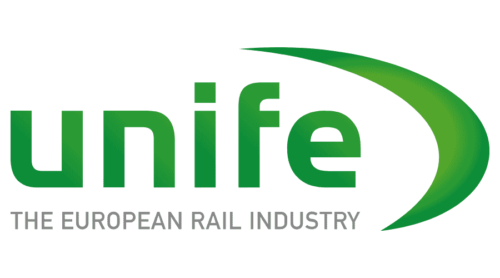WIDER BENEFITS OF HIGH SPEED RAIL CONFIRMED IN NEW STUDIES
The figures are outlined in two new research reports detailing the ways in which railways contribute to a more sustainable transport system. Using case studies and new data, the reports, carried out by consultancy Systra for the International Union of Railways (UIC), also demonstrates the benefits of high speed rail in terms of speed, reliability, comfort and safety.
The main report, “High Speed Rail and Sustainability” considers the social, economic and environmental aspects of high speed rail performance, and makes a compelling case for why rail has major advantages in all three areas.
The accompanying background report, “Carbon Footprint of High Speed Rail Lines”, takes four case studies of high-speed rail lines (two in Europe and two in Asia) and carries out a transparent, robust assessment of carbon emissions for each route, including the planning, construction (track and rolling stocks) and operation phases.
For example, emissions on the high speed Méditerranée line from Valence to Marseille average 11.0g CO2 per passenger km, compared to 151.6g CO2 per passenger km for car and 164.0g CO2 per passenger km for air. The environmental ‘pay back’ time for this route – the length of time it takes for the emissions saved by the impact of the new high-speed services to overtake the additional emissions produced through the line’s construction – was just 5.3 years.
New high speed lines can lead to significant reductions in CO2 emissions by creating modal shift from air to rail. For example, 48,000 less tonnes of CO2 are now produced on the Madrid to Seville corridor following completion of the high-speed line - and have a lower direct land-take requirement than roads (2.5ha/km v. 1.3ha/km).
High speed rail, which is only operated on the electrified network, can directly benefit from the “greening” of the energy supply network, which over time will reduce its carbon emissions even further. The economic benefits of high speed rail are also featured: the reports show how high speed rail supports and helps economic development in the cities that are linked by these routes. An example cited is the French city of Lille, where a new inner-city high-speed station was built to help stimulate regeneration of the city. Over a 13-year period from 1990-2003, the number of tourists in the city increased 15-fold.
UIC Director General Jean-Pierre Loubinoux said: “With COP17 in Durban and Rio+20 coming up in 2012, these reports provide timely evidence of the carbon and sustainability benefits of high-speed rail worldwide. The UIC High Speed Congress in Philadelphia in July 2012 offers stakeholders the opportunity to learn more about these important advantages of the sector”.
CER Deputy Executive Director Libor Lochman said: “The Transport White Paper proposed earlier this year that the European high-speed rail network should triple in size by 2030 and be completed by 2050, to help ensure that the majority of medium-distance passenger transport can go by rail. This report underlines the sustainability benefits that putting our trust in high-speed rail would bring, in addition to the benefits for the travelling public.”
Director-General of UNIFE, Philippe Citroën, said: “The European rail industry welcomes the publication of the UIC reports which confirm that high speed rail is a solution to increase transport sustainability. The development of a European very high speed rail network should therefore be one of the key priorities of the European transport policy. This would contribute to improving transport safety, decreasing the impact of transport on the environment, and increasing the competitiveness of Europe.”
Notes to Editors
The reports “High Speed Rail and Sustainability” can be found on the UIC website at
http://uic.org/IMG/pdf/hsr_sustainability_main_study_final.pdf
The accompanying report “Carbon Footprint of High Speed Rail” can be found on the UIC website at
http://uic.org/IMG/pdf/hsr_sustainability_carbon_footprint_final.pdf
The Community of European Railway and Infrastructure Companies (CER) brings together more than 70 European railway undertakings and infrastructure companies. CER represents the interests of its members towards the European institutions as well as other policy makers and transport actors. CER’s main focus is promoting the strengthening of rail as essential to the creation of a sustainable transport system which is efficient, effective and environmentally sound. For more information, see www.cer.be
UIC, the international railway association which celebrates its 90th anniversary in 2012, counts 200 members across 5 continents (railway companies, infrastructure managers, rail-related transport operators, etc.). UIC’s chief task is to promote railway transport around the world and help its members to meet all the current and future challenges of mobility and sustainable development. UIC’s cooperative undertakings aim to boost the railway system’s competitiveness and interoperability, particularly on an international scale. The 700 technical leaflets which make up the “UIC Code” constitute a technical benchmark across the globe. UIC, as a technical platform coordinates circa 180 railway projects and provides its members with technical know-how and expertise.
www.uic.org
UNIFE represents the European Rail Industry in Brussels since 1992. The Association gathers more than 70 of Europe’s leading large and medium-sized rail supply companies active in the design, manufacture, maintenance and refurbishment of rail transport systems, subsystems and related equipment. A further one thousand suppliers of railway equipment partake in UNIFE activities through 13 national rail industry associations. UNIFE members have an 80% market share in Europe and supply more than 50% of the worldwide production of rail equipment and services.
www.unife.org
UNIFE
John Harcus
Head of Communications
phone +32 2 643 70 80
mobile +32 485 753 665
e-mail john.harcus@unife.org
